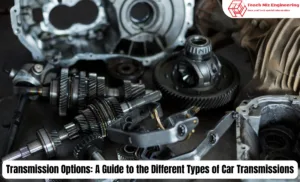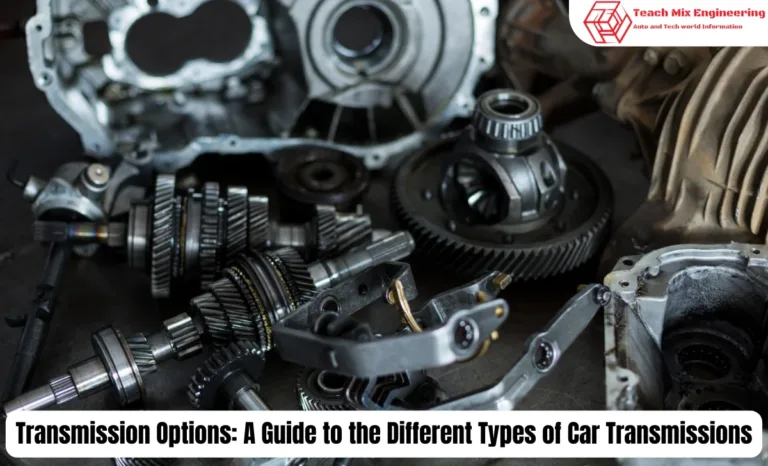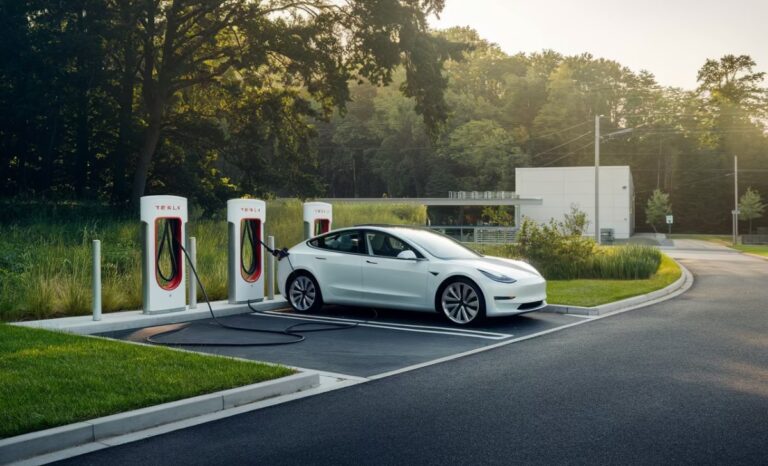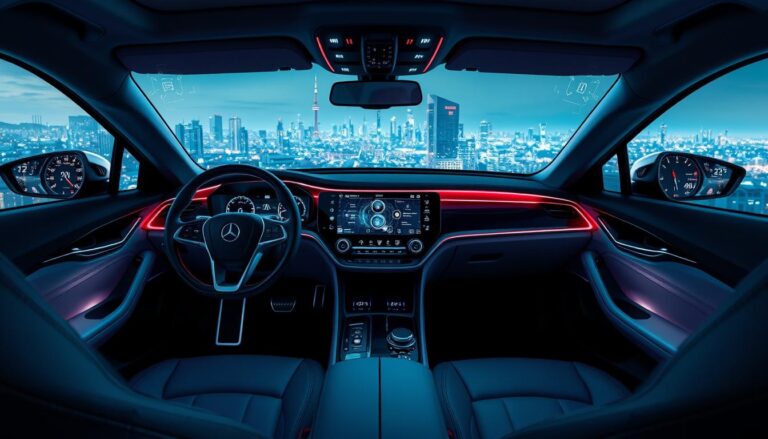Do you know the difference between a manual and an automatic transmission? What about a continuously variable transmission or a dual-clutch transmission? If you’re feeling a bit lost, don’t worry – we’ve got you covered.
Drivers nowadays have a variety of alternatives to select from, each with its own set of pros and cons. Even so, with so many transmission types available, understanding the world of car technology may be difficult. This is when this article is helpful. In this article, we’ll look at the most common types of car transmissions, their features and benefits, and how they can help you make an informed selection when it comes time to buy your next vehicle. Whether you’re a car expert and simply want to update your ride, here’s what you can expect from our detailed reference to transmission options.
In this article
In this article
Manual Transmission
The clutch pedal must be depressed and the gear shift lever must be moved manually with manual transmissions, sometimes referred to as stick shifts. Although it has been around for more than a century, this kind of transmission is still well-liked by drivers who value an exciting driving experience.
Features:
- The driver manually selects gears with the gear shift lever.
- The clutch pedal is used to engage and disengage the transmission from the engine.
- Usually, there are five or six forward gears, and one reverse gear.
- The transmission’s design is relatively simple, consisting of a gearbox and a clutch.
Pros:
- Greater control over the vehicle’s power and speed.
- Improved fuel efficiency compared to automatic transmissions.
- Lower maintenance costs.
- Often cheaper to purchase than automatic transmissions.
Cons:
- Steep learning curve for new drivers.
- Can be tiring to operate in heavy traffic.
- Higher risk of driver error.
- Can be more difficult to sell or trade-in than automatic transmissions.
In general, manual transmissions are more fuel-efficient than automatic transmissions and provide drivers with more control over their cars. Yet, they are difficult for certain drivers to use and need a certain amount of experience. Also, compared to automated transmissions, selling or trading in a manual transmission might be more difficult.
Automatic Transmission
Automatic transmissions are the most often seen type of transmission in modern cars. Unlike manual gearboxes, they do not need the driver to physically shift gears. Instead, the transmission automatically selects ratios based on the vehicle’s speed and engine load.
Features:
- The transmission automatically selects gears based on the vehicle’s speed and engine load.
- There is no clutch pedal, as the transmission uses a torque converter to engage and disengage the engine from the transmission.
- Most automatic transmissions have four to eight forward gears, and one or two reverse gears.
- The transmission’s design is more complex than manual transmissions and includes a torque converter, planetary gear sets, and hydraulic controls.
Pros:
- Easy to operate, making them ideal for city driving and stop-and-go traffic.
- Reduced risk of driver error, as the transmission selects gears automatically.
- Greater comfort and convenience, as the driver does not need to constantly shift gears.
- Often easier to sell or trade-in than manual transmissions.
Cons:
- Lower fuel efficiency than manual transmissions, although modern automatic transmissions are becoming more efficient.
- Higher maintenance costs due to the transmission’s more complex design.
- Higher purchase price than manual transmissions.
- Less engaging driving experience for car enthusiasts.
Generally, automatic transmissions offer better convenience and comfort, making them popular among city drivers or those who regularly experience stop-and-go traffic. Nonetheless, they have greater maintenance costs and use less fuel than manual transmissions.
Check:
5 Things People Do That May Damage The Automatic Gearbox
Continuously Variable Transmission (CVT)
CVT, or continuously variable transmission, is a type of gearbox that, unlike traditional transmissions, does not have gears. Instead, it uses a pulley system and a steel belt or chain to produce an endless number of gear ratios, allowing the engine to operate at its most efficient speed in any given driving situation.
Features:
- The transmission provides an infinite number of gear ratios, making for a smoother driving experience.
- There is no shifting involved, as the transmission adjusts the gear ratio automatically.
- CVTs do not use traditional gears, instead, they use pulleys and a steel belt or chain to provide an infinite number of gear ratios.
- Most modern CVTs have a manual mode that allows drivers to select “gears” manually.
Pros:
- Smooth and seamless acceleration, with no shifting or jerking sensations.
- Improved fuel efficiency compared to traditional automatic transmissions.
- Lower maintenance costs, as there are fewer moving parts than traditional automatic transmissions.
- Greater comfort and convenience, as the driver does not need to shift gears.
Cons:
- Some drivers may find the lack of shifting and engine noise disconcerting.
- CVTs may have a tendency to “drone” at high engine speeds.
- Not as engaging for car enthusiasts as manual transmissions.
- Can be expensive to repair or replace if it fails.
When compared to standard automatic transmissions, CVTs deliver a smoother driving experience and higher fuel efficiency. Nonetheless, some drivers may be bothered by the lack of shifting and engine noise. Also, if a CVT fails, it can be costly to fix or replace it.
Dual-Clutch Transmission (DCT)
DCT, or dual-clutch transmission, is a kind of gearbox that employs two clutches to swap speeds fast and smoothly. One clutch is for odd-numbered gears, while the other is for even-numbered gears. This transmission is becoming increasingly common in high-performance automobiles and sports cars.
Features:
- The transmission uses two clutches to switch gears quickly and smoothly.
- The driver can operate the transmission in either automatic or manual mode.
- DCTs typically have six to eight forward gears and one or two reverse gears.
- The transmission’s design is more complex than traditional automatic transmissions, with a dual-clutch system, electronic control units, and hydraulic systems.
Pros:
- Faster and smoother shifting than traditional automatic transmissions.
- Improved fuel efficiency compared to traditional automatic transmissions.
- Provides a more engaging driving experience than traditional automatic transmissions.
- Can shift gears more quickly than manual transmissions, making them ideal for high-performance vehicles.
Cons:
- Higher maintenance costs than traditional automatic transmissions.
- More complex and expensive to repair than traditional automatic transmissions.
- Some drivers may find the lack of a clutch pedal disconcerting.
- Higher purchase price than traditional automatic transmissions.
DCTs, on average, deliver quicker and smoother shifting than typical automatic transmissions, making them ideal for high-performance cars. They also provide better fuel economy and a more enjoyable driving experience than standard automatic transmissions. Nevertheless, compared to standard automatic transmissions, they have greater maintenance expenses and a higher purchase price.
Automated Manual Transmission (AMT)
AMT is a type of transmission that employs an electronic control unit to automate the clutch and shift operations that are traditionally performed manually in a regular manual transmission. Semi-automatic transmissions are another name for AMTs.
Features:
- The transmission uses an electronic control unit to automate the clutch and shift actions.
- The driver can operate the transmission in either automatic or manual mode.
- Most AMTs have five or six forward gears and one or two reverse gears.
- The transmission’s design is simpler than traditional automatic transmissions, with fewer moving parts.
Pros:
- Lower purchase price than traditional automatic transmissions.
- Improved fuel efficiency compared to traditional automatic transmissions.
- Provides a more engaging driving experience than traditional automatic transmissions.
- Simpler design means lower maintenance costs than traditional automatic transmissions.
Cons:
- Slower and less smooth shifting than traditional automatic transmissions.
- Not as engaging for car enthusiasts as manual transmissions.
- Some drivers may find the jerky shifting and noise disconcerting.
- Limited availability in certain markets and vehicle models.
Generally, AMTs outperform traditional automatic transmissions in terms of fuel efficiency and driving experience, while also having a simpler design that results in cheaper maintenance costs. They are, however, slower and less smooth shifting than typical automatic gearboxes, and they are not as engaging as manual transmissions. AMTs may also be less commonly available than other types of transmissions.
Electric Transmission
Electric transmissions, often known as single-speed transmissions or direct-drive transmissions, are used in electric cars to give power to the wheels without the use of gears. The electric motor delivers immediate torque in electric cars, removing the need for a traditional transmission.
Features:
- Electric transmission does not have gears, instead, it uses a single-speed reduction gear to provide power to the wheels.
- There is no clutch or shifting involved, as the electric motor provides instant torque.
- Electric transmissions are commonly used in electric vehicles, as they provide a more efficient and simpler drivetrain compared to traditional transmissions.
Pros:
- Smoother and quieter operation compared to traditional transmissions.
- Improved energy efficiency compared to traditional transmissions, as there are fewer energy losses associated with gears and shifting.
- Lower maintenance costs compared to traditional transmissions, as there are fewer moving parts.
- Provides instant torque, resulting in quick acceleration.
Cons:
- Limited top speed due to the lack of gears.
- Limited driving range compared to vehicles with traditional transmissions, as there is only one gear ratio.
- More expensive to manufacture than traditional transmissions.
- Not suitable for high-performance applications due to the limited top speed.
Generally, electronic transmissions are becoming increasingly widespread in electric cars because they provide a more economical and straightforward powertrain than regular transmissions. They provide quieter and smoother performance, increased energy efficiency, and decreased maintenance expenses. Nevertheless, because of their restricted peak speed, they are not ideal for high-performance applications and are more expensive to construct than standard transmissions.
Semi-Automatic Transmission
A semi-automatic transmission, or SAT, is a kind of transmission that combines a manual and an automatic transmission. The driver may swap gears manually using paddle shifters or steering wheel buttons, but there is no clutch pedal. The transmission employs electronic controls to engage the clutch and shift gears automatically.
Features:
- The driver can operate the transmission in either automatic or manual mode.
- SATs typically have six to eight forward gears and one or two reverse gears.
- The transmission’s design is more complex than traditional manual transmissions, with electronic control units, hydraulic systems, and a clutch actuator.
- SATs are commonly found in high-performance vehicles and sports cars.
Pros:
- Provides a more engaging driving experience than traditional automatic transmissions.
- Faster and smoother shifting than traditional manual transmissions.
- Can shift gears more quickly than manual transmissions, making them ideal for high-performance vehicles.
- Easier to drive in traffic than traditional manual transmissions.
Cons:
- Higher maintenance costs than traditional manual transmissions.
- More complex and expensive to repair than traditional manual transmissions.
- Some drivers may find the lack of a clutch pedal disconcerting.
- Not as fuel-efficient as some other types of transmissions.
Generally, SATs offer a more engaging driving experience than typical automatic transmissions, as well as faster and smoother shifting than classic manual transmissions. They’re prevalent in high-performance autos and sports cars. They do, however, have greater maintenance costs and are not as fuel-efficient as other transmission designs.
Here are some tips to consider when choosing a transmission type:
Consider your driving needs and habits: If you often travel in congested areas, an automatic or CVT transmission may be more practical. A manual or semi-automatic transmission may be a better alternative if you prefer a more engaging driving experience.
Think about fuel efficiency: Some transmission types, such as CVT and electric transmissions, may be more fuel efficient than typical automatic transmissions.
Consider your budget: Some transmission types, such as manual and AMT, may cost less than typical automatic transmissions, while others, such as electric transmissions, may cost more.
Evaluate the maintenance costs: Some transmission types may require more maintenance than others. Automatic transmissions, for example, may require more regular fluid changes than manual gearboxes.
Research the vehicle’s performance capabilities: Some transmission types, such as DCT and SAT, may be more suited to high-performance applications than others, such as CVT and electric transmissions, which may have limited peak speeds.
Test drive the vehicle: Finally, testing drive the car and evaluating its performance, responsiveness, and the overall driving experience is the best method to discover which transmission type is perfect for you.
To recap, the best transmission for your automobile is determined by your driving demands and preferences. There are various transmission kinds available, including manual, automatic, CVT, DCT, AMT, electric, and semi-automatic transmissions, each having its list of features, pros, and cons.
Manual transmissions offer greater control and a more interesting driving experience, but they can be more difficult to use in heavy traffic. Automatic transmissions are convenient and easy to use, but they may not provide as much control or a dynamic driving experience as manual transmissions. CVT transmissions save fuel but may not operate as well as classic automatic or manual gearboxes. DCT and SAT transmissions are suited for high-performance applications because they provide rapid and smooth shifting. AMT transmissions provide the convenience of an automated transmission at a lower cost. Electric transmissions are simple and economical, but their single-speed design limits them.
It is essential to look at your driving needs and habits, fuel efficiency, budget, maintenance costs, and performance capabilities, and to test drive the vehicle to evaluate its entire driving experience when selecting a transmission type.
“If you found this information useful, please share it with your friends that may be interested in learning more about the many types of car transmissions.”





